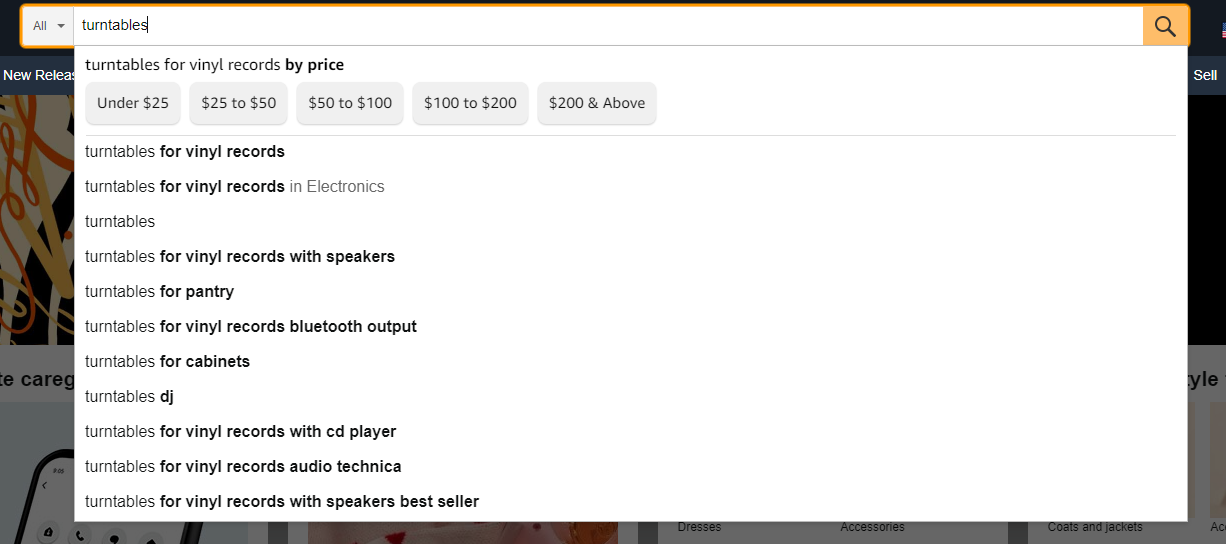Amazon SEO: A Comprehensive Guide For Sellers

In digital marketing, we talk a lot about what you need to do for your website and how to make it SEO friendly to users and search bots.
But how much do you know about Amazon SEO?
If you’re in e-commerce and you’re not on Amazon in 2022, you might not be generating your potential sales.
Amazon is a powerhouse, pillar, old and trusted when it comes to e-commerce, as most people should be aware by now.
Everyone wants to get their products from Amazon because that is where their audience shops.
And this audience is shopping on the platform a bit.
Amazon generates approx $4,722 every second, or about $17 million an hour. Sales giant closed last year with $469.8 billion in net salesup 22% from 2020.
This is why sellers want a piece of the action, and why it can be so difficult for your products to rank on the Amazon results pages.
As with your website, though, you can practice Amazon SEO to give your products a boost.
It’s all about understanding the algorithm, what shoppers are looking for to find what they need, and how you can outperform your competitors.
Here is a comprehensive guide on Amazon SEO for sellers.
How does Amazon’s A9 algorithm work?
Before we talk about Amazon SEO and how you can improve your product listings, it will help to understand how Amazon’s A9 search algorithm works.
It is similar but not identical to Google.
One major difference?
Amazon queries are commercial only, not navigational or informational as with Google.
Think of it simply.
You do a search. A9 knows you want to buy whatever you’re looking for.
The query matches a group of related products, and those products are displayed in a series of pages.
But how exactly does Amazon choose those products?
Again, think of it like Google’s algorithms, but exclusively for e-commerce.
The factors Amazon ranks include:
- Positive customer reviews (Better products will sell more and make more money for Amazon).
- Historical sales.
- Related keywords included in the product list.
- Right prices (Not too high, not too low, based on the competition).
It is important to note here that while the algorithm always looks for the fit based on a query, historical data is also important, as shown in the list above.
Results that have pleased customers in the past are more likely to please customers in the future.
So new sellers on Amazon face a dilemma: If Amazon prioritizes products with strong sales, but you haven’t made any sales yet or generated any historical data for the A9, how can you ever hope to climb Amazon’s rankings?
The answer lies in your Amazon SEO performance, starting with keyword research that can find you the shoppers that matter to you.
Do keyword research on Amazon
Just like with Google, your Amazon SEO strategy should be built on keyword research.
Without the right keywords in your rankings, your products will look irrelevant and not visible to users.
I’ll talk about how and where to optimize your lists for keywords in a minute. First, we need to know where to find keywords and how to do keyword research.
One great way to do keyword research that every Amazon seller should know is to use the Amazon search box.
It will auto-complete your queries as you type them, essentially doing keyword research for you.
Take the example from the screenshot below.
Let’s say you’re an online music store and you want to start listing my records on Amazon.
Let me see what people are actually searching for to get an idea of how to improve your listings.
clearly, [vinyl record turntable] It will be a strong keyword with a lot of competition.
This isn’t the only research you should do, in this case.
You need to keep looking for all the variations of turntables you can think of and see what happens.
Take this following example:
 Screenshot from Amazon, February 2022
Screenshot from Amazon, February 2022This research gives some insights as the predictions get more specific.
[Turntables for vinyl records]And [turntables for vinyl records with speakers]And [turntables for vinyl records with cd player] They are all specific queries.
These are for people who are continuing their purchasing journeys.
They know what they want. They just want to see the options.
Search all the variations you can think of in the search box to get a decent list of keywords that you can reasonably rank for.
What are some other ways to do keyword research on Amazon?
Basically, all the other ways you know to do keyword research for Google.
Use free tools like Keyword Planner or paid tools like Semrush or Ahrefs to see search volumes and difficulty ratings for those keywords.
You can also look at your Google Search Console data if you sell the same products on a website to see how people find you on Google.
All of these methods together should give you a good selection of relevant keywords that you can use to improve your product listings.
Amazon listing optimization
Once you have your keyword list, it’s time to use them to improve your product listings.
If you’re already familiar with writing optimized product descriptions and other content for Google rankings, you’re in luck.
Doing this for Amazon basically works the same way.
You should start with your product titles.
Amazon requires that titles be no longer than 200 characters and include words that accurately describe the product.
This is also an opportunity for sellers to include relevant keywords, but please don’t.
Don’t put keywords in the rest of your product description either.
You should use keywords in your prose, bullet points, and technical details wherever possible. But use it appropriately.
The key is to use the most relevant keywords that also give you the best chances of driving traffic to your products.
Long tail keywords are good too, as not everyone can rank for those perfect seed terms.
Don’t forget that you can add keywords to the back end of your product pages too!
They can help get you visible on Amazon even though customers can’t see them.
Finally, when you’re writing your product descriptions, don’t be afraid to go all the way.
Be detailed. Tell a story.
It’s content, and it can help your products rank better.
Amazon product images
In any post about Amazon SEO we have to talk about product images.
Whether you’re doing e-commerce on your own website or through Amazon, the right images can make or break you.
People are there to buy a product, and your written description only goes so far.
You can describe a vinyl record all you want.
You can talk about their colors, shape and features.
But none of this matters if no one can see the thing!
This is why product photos are so important, and not just any photos, but high-resolution photos (over 1000 pixels in one direction), preferably professionally taken.
Remember, Amazon allows customers to zoom in on product images very closely these days, so quality really matters here.
It’s worth noting that Amazon doesn’t necessarily rank you higher based on your photo quality.
You can and should add SEO-optimized alt text to your images so that Google can present them in image search results, but the play here is really adding images that show your product from all angles.
Let your photos show all the details because photos can be just as powerful in making a sale as product descriptions.
Another angle you should take for Amazon product photos are what are called lifestyle photos, or photos that show people using the products in the ways they were intended.
Why is this important?
Anything that makes a customer imagine using your products in their home is a plus.
They can see the size of the item in relation to real-world objects and learn how the item is used.
Zoomable product photos along with lifestyle photos are vital to your success on Amazon.
Reviews and ratings
I mentioned above that product reviews and ratings have a lot to do with where your products fall in the Amazon search results.
This makes perfect sense from a user experience perspective.
Just like Google, Amazon’s main goal is to provide users with positive and meaningful experiences.
This is why Amazon reviews and star ratings are vital to strong product ratings.
Think about it logically: Would Amazon want to show you a group of one-star products on the first results page for a query?
No, that won’t help anyone.
Amazon wants customers to buy things, so it will offer products that many people have bought and loved.
What matters here are the stars and the number of reviews your products have.
Which product would you trust more: a product with 17 reviews or a product with 4,567 reviews?
Which combination of reviews will give you a clearer picture of what to expect?
So, if product reviews influence Amazon ratings, how do you get reviews? Amazon makes this easy for you with files Feature review request.
It’s always a good idea to reach out to customers after a purchase to see if they’d like to write a review.
The thing is, good products tend to fetch reviews anyway.
When you make people happy, they will want to share their satisfaction with others.
Negative reviews can always happen, but the trick is to respond quickly to see what you can do to improve the customer experience from that point on.
Measure product performance through analytics
The last part of doing a comprehensive Amazon SEO involves measuring the performance of your products through analytics.
Again, if you optimize a website for Google rankings, you know the value in analytics.
When it comes to Amazon, you want to track your SEO so you can keep track of your product optimization strategy.
Now, if you are a brand owner, you have access to Amazon’s Brand analytics.
For all other vendors, though, you have to go into third-party apps that track components like keywords and product performance.
Most of these tools are one-stop solutions, which means you can perform keyword research, get help optimizing your listings, track your products and inventory, look at your finances, get competitor information, track Amazon SEO and paid media in general.
If you are serious about making a living as a seller on Amazon, it will be well worth the investment to get access to one of these software tools. You can’t afford to go into blindness and risk not making an impact among others vying for a place on the front page.
What are the best tools?
There are several Amazon Analytics tools that consistently rank highly among reviewers.
some of those helium 10And SellicsAnd data hook.
Many of these companies offer either free trials or live demos so you can decide which tool is right for you.
A powerful Amazon SEO strategy begins now
Amazon sellers need a lot of work when they want to make it happen on the platform.
If you’re already familiar with optimizing content for Google, you’re already part way there.
As long as you know that Amazon rewards sellers with amazing products that wow customers, you know which direction you need to go.
These Amazon SEO tips will help you the rest of the way.
More resources:
- Ecommerce Product Page SEO: 20 Tips
- How to use the Amazon Brand Referral and Brand Referral Reward Programs
- Ecommerce Marketing: The Ultimate Guide
Featured image: MooseDesign/Shutterstock




